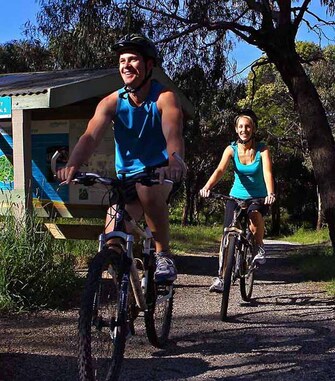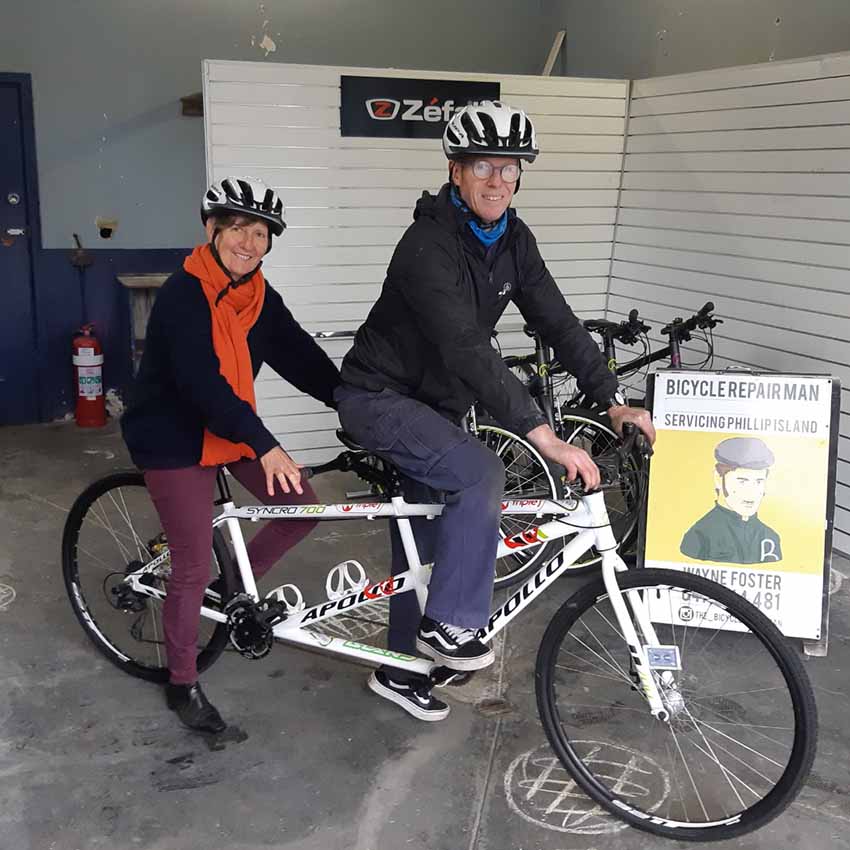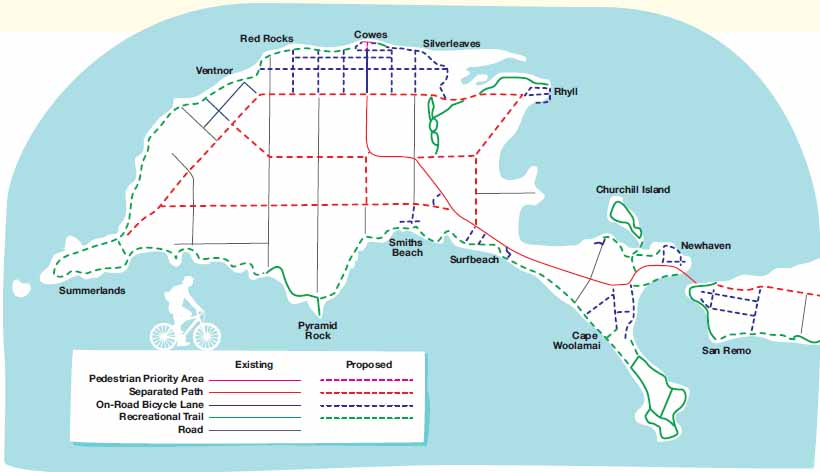 Cycling at the Oswin Roberts Reserve is a pleasure but what about the rest of Phillip Island?. Photo: Visit Victoria
Cycling at the Oswin Roberts Reserve is a pleasure but what about the rest of Phillip Island?. Photo: Visit Victoria PHILLIP Islanders are prepared to tolerate the mad school holiday weeks and big crowds, alongside the convoys of buses taking pilgrims to see the penguins, because we know we live in such a wonderful part of the world.
We’ve seen significant change and improvements over the years such as the visionary move by the Cain/Kirner Government in the 1980s to buy back the Summerlands and construct the Nobbies Boardwalk at Point Grant. More recently we’ve got the Phillip Island Community Hospital and work has started on the Woolamai and Back Beach Roads roundabouts.
Which leads me to the missing link on the Island – an integrated bike-walking trail network on Phillip Island.
Everyone agrees it should be a priority – but still nothing happens.
| I regularly see people cycling along Ventnor Road at their peril, hugging the edge of the bitumen. No doubt after we emerge from Covid-19 we will continue to see increased bike and e-bike use. Promoting cycling access from Cowes to the Penguin Reserve and The Nobbies I’m also seeing more “big tyre” bikes riding along Ventnor beach. Recently near Grossard Point I talked with a family group who said they were riding to Flynns Beach and, being mindful of the tide, would probably ride back on the road. Having walked this route a few years ago, I returned home along the road for the same reason. I clearly recall being buffeted by the strong wind and the general danger from traffic on the road. It could have been a pleasant off-road walk as there was ample room alongside the road, but the ground was rough, overgrown and at times swampy. Even the home run down Grossard Point Road on the grassy verge was hard going, which is why people walk and cycle on the road. I have walked and ridden across much of Phillip Island, as well as making the return trip on the George Bass Coastal Walk with two energetic teenagers, lunching at our favourite spot, the Kilcunda Pub. It also takes a lot to beat the serene paths between Rhyll and Conservation Hill, affectionately called “the Swamp Walk”, which can be enjoyed on bike or foot, while taking in the spectacular Ramsar-listed Rhyll inlet. I’ve done some serious trekking in my youth, independently hiking the Annapurna Circuit and crossing Nepal’s Thorong-La Pass at over 5400 meters, then the Trans-Himalayan Highway in Ladakh (in the news recently with clashes between India and China) and more recently, Arkaroola in the Flinders Ranges. My father called cycling “sitting down walking” and I grew up riding what would now be a collectable vintage bike. I used to ride on roads around Melbourne and regional Victoria, but a “road rage” incident, in which a ute driver left me bruised and bleeding in a gutter, led me to restrict myself to bike paths or side streets. | Cycle Safe Totally Renewable Phillip Island today launches Active Transport/Cycling on Phillip Island which recommends increased funding to promote safe cycling on Phillip island. The report’s researcher and writer, Mary Whelan, said studies have universally shown that more people would cycle if off-road tracks were available. “Visitors to the island want to cycle but the roads are just too dangerous. Sections of Back Beach Road – running past the race track – are still 100 km/h. No one wants to cycle on a road with fast-moving traffic.” She said the group was calling on elected representatives – councillors and state and federal MPs – to deliver the funding to the community within the next four years. “We know the most effective intervention for childhood obesity is active transport – walking and cycling. We’ve got to try to get people to believe these things are possible, but we have to fight for them.” The cost of building a 1.5 metre shared path averages around $200 per metre, depending on topography and planning, which puts the cost of the Cowes-Ventnor path at around $3 million. Mary points out that the Victorian Government is offering COVID stimulus grants of between $1 million and $10 million to councils for shovel-ready sports projects. “Imagine if we’d done the planning for a shared path between Cowes and The Nobbies. We would be in a position to start work immediately.” |
Cycling has come a long way since then – with mandatory helmets, awareness campaigns, high-tech bikes and clothing and a great network of trails around Melbourne and Victoria.
Back to Phillip Island’s missing link. I recently contacted the MP for Bass, Jordan Crugnale, and Bass Coast Island Ward councillors about the need to prioritise an integrated bike-walking path network for Phillip Island and the opportunity Covid-19 stimulus works offers. They were very supportive. I hope it is not long before construction takes off, so residents and visitors alike can all enjoy the trails and safe cycling-walking on The Island.

